An estimated 1 million trees were blown away from the surrounding hillside by a super-heated wall of volcanic gas and searing ash and rock, and these along with other rubble were deposited on Spirit Lake. The debris avalanche temporarily displaced much of the lake from its bed sending 600-foot-high waves crashing into a ridge north of the lake. As the water moved back into its basin, it pulled with it thousands of more trees into the lake. About 350,000 acre-feet of pyrolized trees were deposited into Spirit Lake and these shattered trees formed a floating log raft on the lake surface that is present to this day, more than three decades after the event.
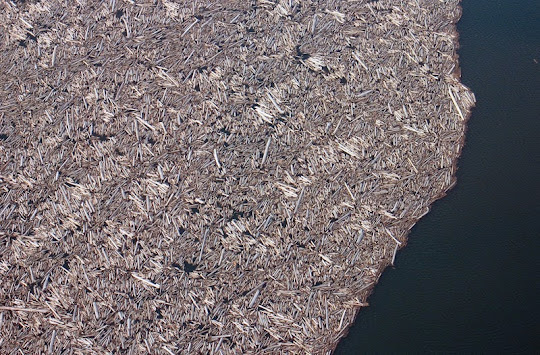
A portion of the thousands of trees that remain floating in a giant raft on the surface of the lake. Photo taken on March 29, 2007.
Prior to the eruption, Spirit Lake was a popular and picturesque body of water and was well known to many people as a vacation spot. There were six camps on the shore and a number of lodges catering to visitors.
Today, Sprit Lake is a wasteland choked with thousands of logs and volcanic debris. Huge quantities of debris decreased the lake volume by approximately 46,000 acre-feet, and its depth by 80 feet. Lahar and pyroclastic flow deposits from the eruption blocked its natural pre-eruption outlet to the North Fork Toutle River valley at its outlet, raising the surface elevation of the lake by 200 feet.
When scientists saw the mass destruction, they realised that Sprit Lake provided them with a rare opportunity to study microbial and chemical transformations and the biological restoration of a lake severely impacted by a major volcanic disturbance. To ensure protection of Spirit Lake and other recovering ecosystems inside the volcano's 220-square-mile blast area, the Mount St. Helens National Volcanic Monument was created in 1982. Fishing and other recreational activities potentially disruptive to Spirit Lake's recovery are prohibited. This is one of the primary reasons why no attempts were made to recover the logs and other forest debris floating in the lake.
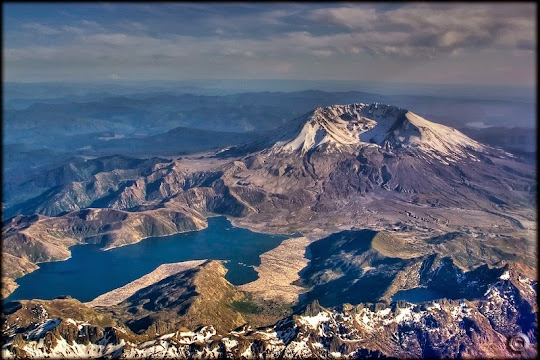
The collapsed crater of Mount St. Helen with Spirit Lake in the foreground.
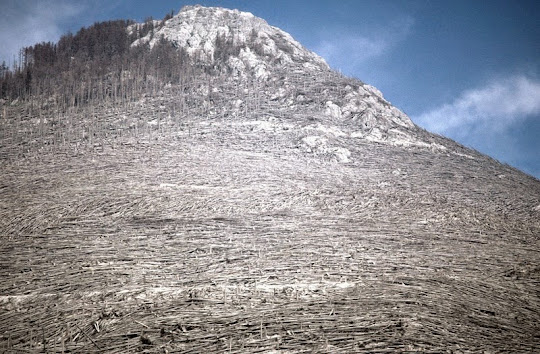
Blowdown of trees from the May 18, 1980 eruption of Mount St. Helens. Elk Rock is the peak with a singed area on the left.

Thousands of trees in the North Fork Toutle River drainage area are shown blown down by the force of the May 18, 1980, eruption of Mount St. Helens, seen on Aug. 22, 1980.
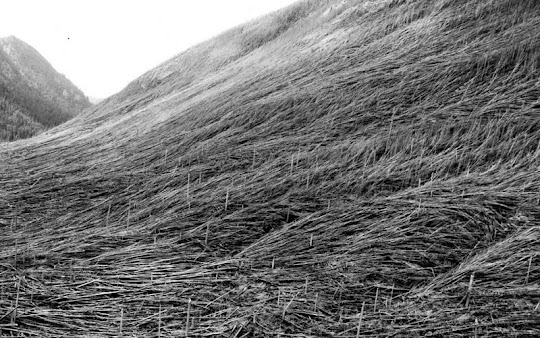
Massive blowdown of trees in the Green River valley seen on June 2, 1980. The flattening of the forest resulted from the May 18 eruption of Mount St. Helens.
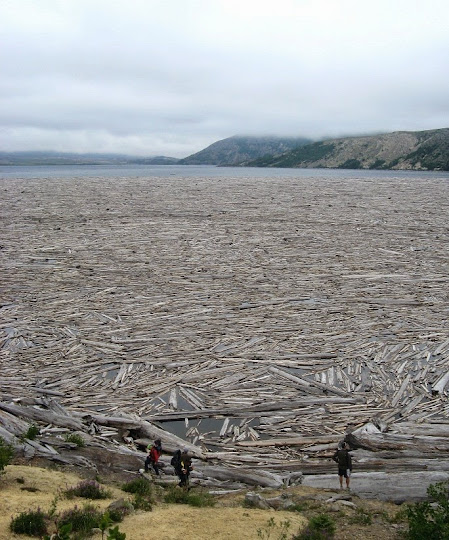
Logs covering Spirit Lake, 2009.
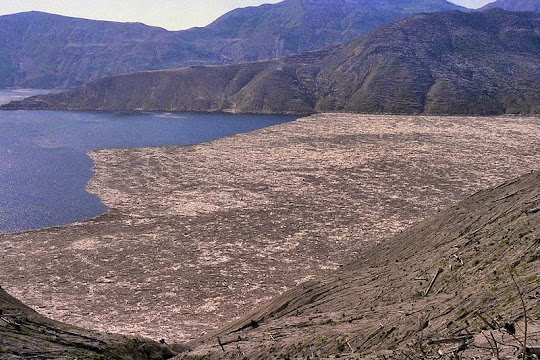
Spirit Lake log mat in 1985.
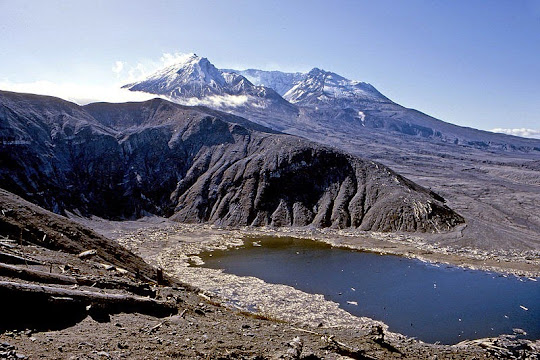
View of Spirit Lake, southwest looking down to southern end . Blast-fell logs litter the banks or still float after the lake had been drained to maintain a safer water level since avalanche debris and trees had raised the level by several hundred feet.
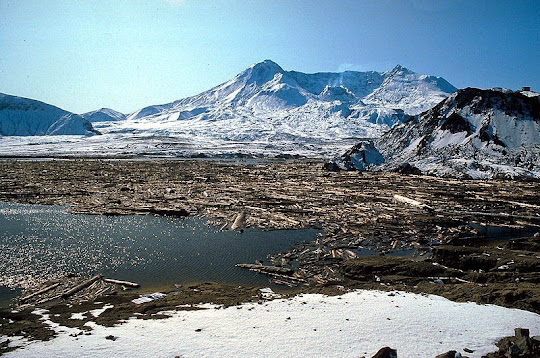
Spirit Lake on the slopes of Mt. St. Helens in Washington State, USA. This photo was taken two years after the eruption and shows the ruined lake filled with debris from the eruption.
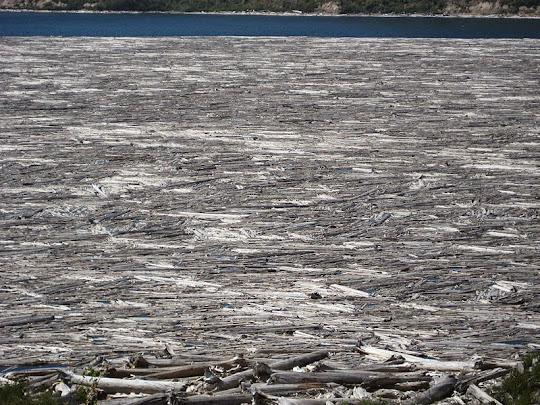
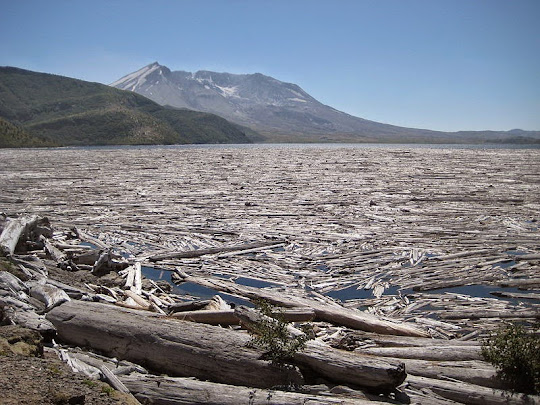


A road through the blast zone. Picture taken in 2009.
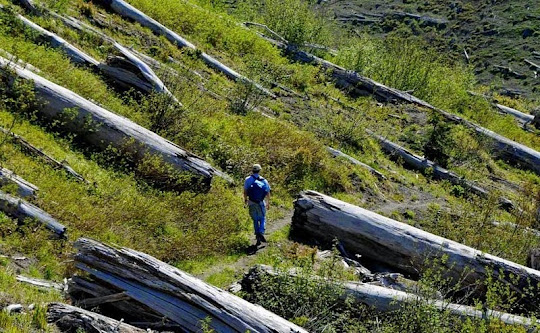
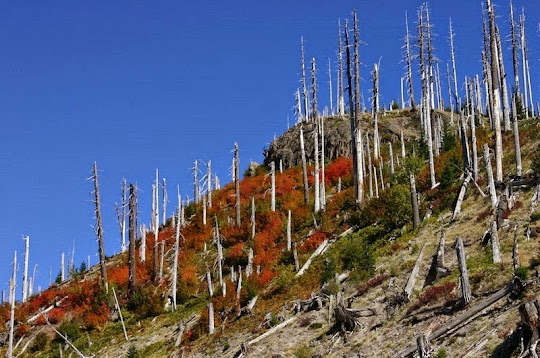
Broken stumps of trees litter the regions around Mount St. Helen.
Source
